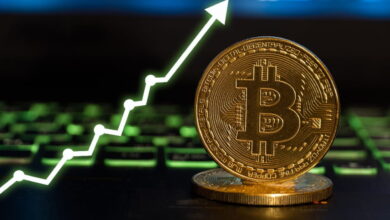Top 10 Altcoins Set to Boom in 2025 Expert Predictions

The cryptocurrency market continues to evolve at a breakneck pace, and 2025 is shaping up to be a transformative year for digital assets beyond Bitcoin. While the flagship cryptocurrency dominates headlines, savvy investors are increasingly turning their attention to altcoins that offer innovative solutions, real-world applications, and tremendous growth potential. As blockchain technology matures and mainstream adoption accelerates, certain alternative cryptocurrencies are positioned to deliver extraordinary returns for those willing to look beyond the obvious choices.
The altcoin landscape has transformed dramatically over recent years, with projects focusing on practical utility rather than pure speculation. From decentralized finance platforms to layer-2 scaling solutions, the next generation of cryptocurrencies is addressing real problems while building sustainable ecosystems.
Which altcoins have the strongest fundamentals, most dedicated development teams, and clearest paths to adoption can make the difference between modest gains and life-changing profits. This comprehensive analysis examines the top 10 altcoins that industry experts believe are poised for explosive growth in 2025, providing you with the insights needed to make informed investment decisions in this dynamic market.
The Altcoin Market Landscape in 2025
The cryptocurrency ecosystem has matured significantly since the early days of speculative trading and questionable projects. Today’s altcoin market is characterized by sophisticated blockchain protocols, genuine technological innovation, and increasing institutional interest. The total market capitalization of altcoins has grown substantially, reflecting broader acceptance of digital assets as legitimate investment vehicles and functional technologies.
Several macro trends are driving the altcoin boom in 2025. Regulatory clarity in major markets has removed significant uncertainty, allowing projects to operate with greater confidence and attracting institutional capital that was previously sitting on the sidelines. Additionally, the integration of artificial intelligence and machine learning into blockchain infrastructure is creating new possibilities for smart contract functionality and decentralized applications. The convergence of these technologies is opening doors to use cases that were impossible just a few years ago.
Another critical factor is the growing demand for Web3 solutions that give users control over their data and digital identities. As concerns about privacy and centralized control of information intensify, blockchain-based alternatives are gaining traction. Projects that successfully bridge the gap between complex technology and user-friendly interfaces are particularly well-positioned to capture market share as mainstream users begin exploring decentralized alternatives to traditional platforms.
Ethereum Layer-2 Solutions Leading the Charge
The Ethereum ecosystem remains the backbone of decentralized applications, but scalability challenges have created opportunities for layer-2 solutions to flourish. These protocols process transactions off the main Ethereum chain while maintaining security guarantees, dramatically reducing costs and increasing throughput. Several layer-2 projects have demonstrated exceptional performance and are experiencing rapid adoption among developers and users alike.
What makes these scaling solutions particularly attractive is their symbiotic relationship with Ethereum. Rather than competing directly with the world’s leading smart contract platform, they enhance its capabilities and expand its reach. As Ethereum continues to dominate the decentralized finance and NFT spaces, the layer-2 protocols that provide the best user experience and most efficient transaction processing will capture significant value.
The network effects surrounding these projects are accelerating at an impressive rate. Major decentralized exchanges, lending platforms, and gaming applications are deploying on layer-2 networks to offer their users better experiences. This migration of activity from the Ethereum mainnet to layer-2 solutions is creating substantial demand for the native tokens of these protocols, which are required for transaction fees, governance, and various protocol functions.
Decentralized Finance Protocols Revolutionizing Traditional Banking
The DeFi revolution continues to reshape financial services, and several altcoins powering decentralized finance platforms are positioned for tremendous growth in 2025. These projects are building the infrastructure for a parallel financial system that operates without traditional intermediaries, offering services like lending, borrowing, trading, and yield generation to anyone with an internet connection.
What distinguishes the leading DeFi protocols is their focus on security, sustainability, and real utility. Early DeFi projects often prioritized rapid growth over long-term viability, leading to numerous hacks and failures. Today’s successful platforms have learned from these mistakes, implementing rigorous security audits, sustainable tokenomics, and governance structures that align incentives across all participants.
The total value locked in decentralized protocols has reached new heights, and this trend shows no signs of slowing. As traditional financial institutions begin integrating blockchain technology into their operations, the DeFi protocols with the most robust infrastructure and proven track records will benefit from increased institutional adoption. These platforms are not just alternatives to traditional finance—they’re becoming integral components of the global financial architecture.
Artificial Intelligence and Blockchain Convergence Projects

The intersection of artificial intelligence and blockchain technology represents one of the most exciting frontiers in the cryptocurrency space. Projects that successfully merge these transformative technologies are developing solutions for decentralized computing, data marketplaces, and autonomous agents that can interact with smart contracts. This convergence is creating entirely new categories of applications that leverage the strengths of both AI and blockchain.
These platforms are addressing critical challenges in the AI industry, particularly around data privacy, model training, and computational resources. By decentralizing these processes, they’re making advanced AI capabilities accessible to developers and businesses that couldn’t previously afford the infrastructure required for sophisticated machine learning applications. The tokenomics of these projects often reward participants who contribute computing power or data, creating sustainable ecosystems.
The market for AI-related cryptocurrencies has expanded rapidly as awareness grows about the potential applications. From predictive analytics for trading to automated smart contract auditing, these projects are demonstrating practical utility that extends far beyond theoretical possibilities. As artificial intelligence becomes increasingly central to business operations across industries, blockchain projects that facilitate AI development and deployment are likely to see substantial appreciation.
Real World Asset Tokenization Platforms
One of the most promising developments in the cryptocurrency space is the tokenization of real-world assets. Several altcoins are building platforms that enable the creation of blockchain-based representations of physical assets like real estate, commodities, fine art, and even intellectual property. This asset tokenization trend is unlocking liquidity in traditionally illiquid markets while making investment opportunities accessible to a broader range of participants.
The regulatory environment for tokenized assets has improved significantly, with clear frameworks emerging in major jurisdictions. This clarity has given institutional investors and asset managers the confidence to explore blockchain-based asset management seriously. Projects that have established compliant infrastructure and partnerships with traditional financial institutions are particularly well-positioned to capture market share in this rapidly growing sector.
The efficiency gains from tokenization are substantial. Settlement times that once took days or weeks can now occur in minutes, and the fractional ownership enabled by tokenization allows smaller investors to access previously exclusive investment opportunities. As more traditional assets migrate onto blockchain rails, the platforms facilitating this transition will experience growing demand for their services and tokens.
Gaming and Metaverse Infrastructure Tokens
The gaming industry’s embrace of blockchain technology has created enormous opportunities for altcoins that power virtual worlds and gaming economies. Unlike earlier attempts at blockchain gaming that felt forced and prioritized financialization over fun, today’s leading projects are building genuinely engaging experiences that happen to incorporate cryptocurrency elements. This shift toward gameplay-first design is attracting mainstream gamers and significant investment.
The infrastructure supporting these gaming ecosystems has evolved considerably. High-performance blockchain networks specifically optimized for gaming applications are processing thousands of transactions per second with minimal latency, finally delivering the user experience that gamers expect. The tokens powering these platforms serve multiple functions, from in-game currencies to governance rights over game development decisions.
What makes gaming-focused altcoins particularly attractive is the massive existing market they’re targeting. The global gaming industry generates hundreds of billions in annual revenue, and capturing even a small percentage of this market represents tremendous growth potential. As players increasingly demand true ownership of their digital assets and the ability to transfer value between games, blockchain-based gaming platforms are positioned to become dominant forces in interactive entertainment.
Privacy-Focused Cryptocurrencies Gaining Momentum
As digital surveillance intensifies and data breaches become increasingly common, privacy coins are experiencing renewed interest from users who value financial confidentiality. While Bitcoin’s transparency has advantages, many individuals and businesses prefer transactions that don’t broadcast their financial activities to the entire world. Leading privacy-focused altcoins use advanced cryptographic techniques to ensure transaction details remain confidential while still maintaining network security.
The regulatory landscape for privacy cryptocurrencies has been challenging, with some jurisdictions viewing them skeptically due to concerns about illicit use. However, the most successful privacy projects have demonstrated that confidentiality and compliance aren’t mutually exclusive. By implementing optional transparency features and working proactively with regulators, these platforms are building sustainable businesses around legitimate privacy needs.
The market for private transactions extends far beyond individuals seeking anonymity. Businesses conducting competitive research, high-net-worth individuals managing their affairs, and organizations operating in sensitive industries all have legitimate reasons to keep financial activities confidential. As awareness grows about the surveillance capabilities of traditional financial systems, privacy-preserving cryptocurrencies are likely to see increased adoption from mainstream users who simply value discretion.
Sustainable and Energy-Efficient Blockchain Networks

Environmental concerns about cryptocurrency energy consumption have created opportunities for projects built on energy-efficient consensus mechanisms. Several altcoins are demonstrating that blockchain networks can be both secure and environmentally sustainable, using proof-of-stake and other innovative approaches that consume a fraction of the electricity required by traditional proof-of-work systems.
These eco-friendly platforms are attracting attention from investors who consider environmental, social, and governance factors in their decisions. Major institutions that previously avoided cryptocurrency due to sustainability concerns are now exploring these efficient alternatives. The growing emphasis on corporate responsibility and climate action is creating tailwinds for blockchain projects that can demonstrate minimal environmental impact.
Beyond just energy efficiency, leading sustainable blockchain platforms are building entire ecosystems around green technology and carbon credit markets. Some projects are using blockchain to create transparent carbon offset registries, while others are facilitating renewable energy trading and environmental conservation funding. These practical applications of sustainable blockchain technology are generating real-world impact while creating value for token holders.
Cross-Chain Interoperability Solutions
The cryptocurrency ecosystem has historically been fragmented, with different blockchains operating as isolated islands unable to communicate effectively. Interoperability protocols are solving this problem by enabling seamless asset transfers and information sharing between disparate blockchain networks. These bridge technologies are essential infrastructure for a multi-chain future where users can access applications across different platforms without friction.
The technical challenges involved in building secure cross-chain solutions are substantial, requiring sophisticated cryptographic techniques and novel architectural approaches. Projects that have successfully implemented robust interoperability solutions are seeing explosive growth as users and developers recognize the value of connected blockchain ecosystems. The ability to move assets between chains without relying on centralized exchanges represents a significant improvement in user experience and security.
As the number of blockchain platforms continues to proliferate, the demand for cross-chain infrastructure will only intensify. Rather than a future where one blockchain dominates all others, the industry appears to be moving toward a multi-chain reality where specialized platforms coexist and complement each other. The protocols facilitating communication and value transfer between these networks are positioned to capture significant value as essential infrastructure providers.
Emerging Markets and Financial Inclusion Projects
Several altcoins are specifically targeting financial inclusion in developing economies where traditional banking infrastructure is limited but mobile phone penetration is high. These projects are building cryptocurrency-based payment systems, remittance networks, and microfinance platforms that provide essential financial services to unbanked populations. The social impact potential of these initiatives is matched by their commercial viability as they tap into massive underserved markets.
The remittance industry alone represents a multi-hundred-billion-dollar opportunity, with existing services charging exorbitant fees to people sending money across borders to support their families. Cryptocurrency-based alternatives can reduce these costs dramatically while providing faster settlement times. Projects that have established partnerships with mobile network operators and local businesses in target markets are building sustainable competitive advantages.
Beyond payments, these platforms are exploring microfinance. Insurance products, and savings solutions tailored to the unique needs of developing market users. By leveraging blockchain technology to reduce operational costs and increase transparency. They’re able to serve customers profitably at price points that traditional institutions can’t match. As smartphone adoption continues accelerating in emerging economies, the addressable market for these services is expanding rapidly.
Also Read: How Altcoin Season Start Complete 2025 Guide
Conclusion
The altcoin market in 2025 presents unprecedented opportunities for informed investors willing to look beyond Bitcoin and conduct thorough research. The projects highlighted in this analysis represent diverse approaches to leveraging blockchain technology for practical applications. From scaling solutions and DeFi platforms to privacy coins and interoperability protocols. What unites these opportunities is their focus on solving real problems, building sustainable ecosystems, and creating genuine value for users.
Success in the altcoin market requires more than simply following hype or chasing quick profits. The cryptocurrencies most likely to boom in 2025 are those with strong fundamentals. Talented development teams, growing user bases, and clear paths to adoption. While volatility remains inherent to cryptocurrency investing, diversifying across multiple promising projects with different. Use cases can help manage risk while maximizing potential returns.
As blockchain technology continues maturing and regulatory frameworks solidify. The distinction between speculative tokens and legitimate projects will become increasingly clear. The altcoins that survive and thrive will be those that deliver tangible value, whether through financial services, gaming experiences. Privacy protection, or infrastructure provision. By understanding the trends shaping the industry and identifying projects positioned to capitalize on these developments. Investors can position themselves to benefit from what promises to be a remarkable year for alternative cryptocurrencies.
Frequently Asked Questions
What makes an altcoin likely to boom in 2025
Altcoins with the highest probability of significant growth in 2025 typically share several characteristics. Strong technological fundamentals, experienced development teams, growing user adoption, strategic partnerships, and solutions to real-world problems. Projects that have demonstrated consistent progress. Maintained active communities, and adapted to changing market conditions are more likely to succeed than. Those relying purely on marketing hype. Additionally, altcoins operating in sectors experiencing structural growth, such as DeFi, gaming, or layer-2 scaling. Benefit from favorable industry tailwinds that can amplify their individual merits.
How much should I invest in altcoins versus Bitcoin
The appropriate allocation between Bitcoin and altcoins depends on your risk tolerance, investment timeline, and financial goals. Bitcoin generally offers more stability and is considered a safer store of value. While altcoins provide higher potential returns alongside greater volatility and risk. Many investors follow a core-satellite approach, maintaining. A substantial Bitcoin position as their portfolio foundation while allocating a smaller percentage to carefully selected altcoins. Financial advisors typically recommend never investing more in cryptocurrency than you can afford to lose completely, and diversifying across. Multiple assets rather than concentrating holdings in just one or two projects.
Are altcoins riskier than Bitcoin
Generally speaking, altcoins carry higher risk than Bitcoin due to several factors including lower liquidit. Less established track records, smaller development teams, and greater regulatory uncertainty. Many altcoin projects fail completely, and even successful ones can experience extreme price volatility. However, this increased risk comes with the potential for substantially higher returns when projects succeed. The key is conducting thorough research, understanding. The technology and team behind each project, and only investing in altcoins with clear. Use cases and strong fundamentals rather than chasing speculative hype.
What is the best way to research altcoins before investing
Effective altcoin research involves multiple steps and information sources. Start by reading the project’s whitepaper to understand its technology, use case, and tokenomics. Examine the team’s backgrounds and track records, looking for experienced developers and advisors with relevant expertise. Review the project’s GitHub repository to assess development activity and code quality. Check social media channels and community forums to gauge user engagement and sentiment. Analyze partnerships, exchange listings, and adoption metrics. Finally, consider the competitive landscape and evaluate whether the project offers genuine advantages over alternatives. Never invest based solely on price charts or social media hype without understanding the underlying fundamentals.
When is the best time to buy altcoins in 2025
Timing cryptocurrency investments perfectly is essentially impossible, and attempting to do so. Often results in missed opportunities or poor decisions driven by emotion. Rather than trying to predict short-term price movements, focus on building positions gradually through dollar-cost averaging. Where you invest fixed amounts at regular intervals regardless of price. This approach reduces the impact of volatility and removes emotional decision-making from the equation. However, certain periods may offer better opportunities than others—market corrections and periods of fear. Often present attractive entry points for projects with strong fundamentals, while extreme hype and parabolic price increases typically signal caution. The most important factor is having a long-term perspective and investing only amounts. You’re comfortable holding through inevitable periods of volatility.




